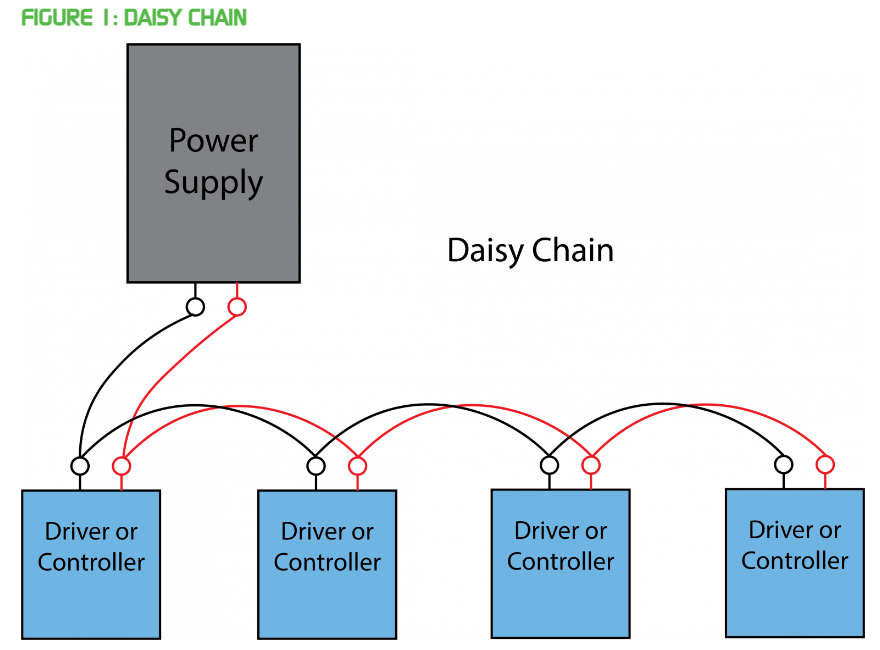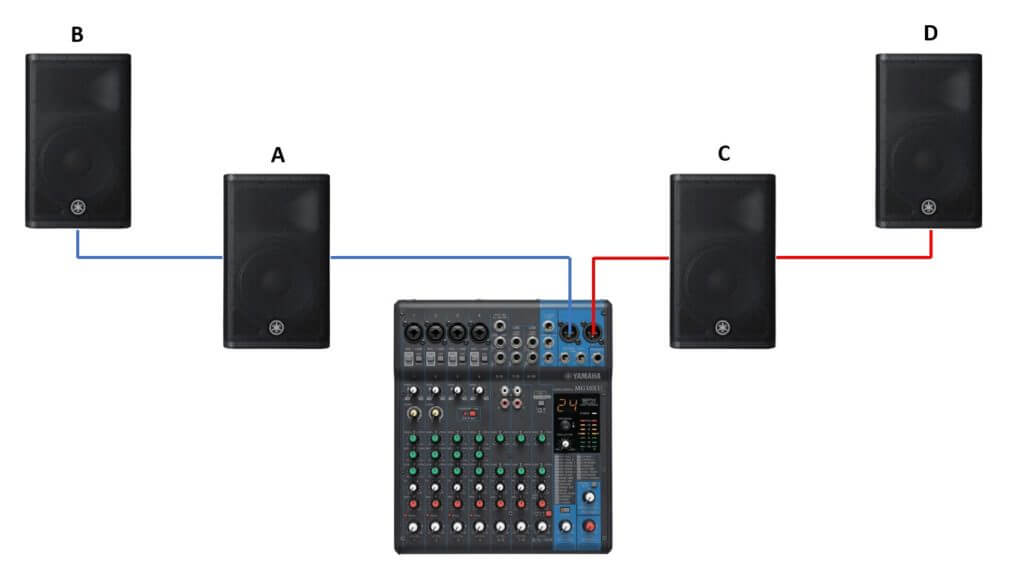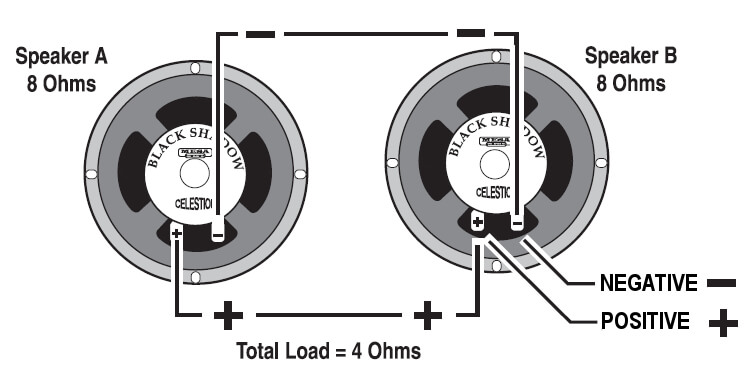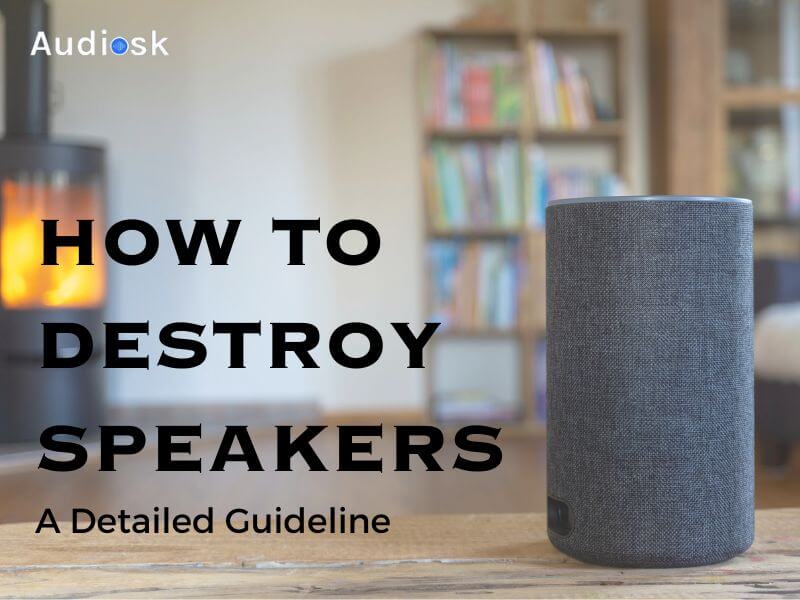In today’s sound systems, learning how to connect speakers in a ‘daisy chain’ is a really useful skill. With our experience, we’re all about making this kind of thing easier to understand, even for those who are new to setting up speakers. In this guide, we’re going to show you how to connect multiple speakers one after the other, which is great for making the sound reach further or sound better in big spaces.
Whether you’re putting together a home cinema, setting up speakers for an event, or just want music in different rooms, our simple steps will help you get it right. We’ll go through what you need, how to connect everything step by step and give you tips to make sure your speakers sound fantastic together.
In this article, we will provide you with easy-peasy methods to help you know How to Daisy Chain Speakers. Let’s get started.
What Is Daisy Chaining?
To amplify sound or expand the range of the sound, numerous speakers can be connected in series or parallel using the standard technique known as daisy chaining in audio systems.
Daisy chaining refers to the analogy of joining Daisy’s stem to stem to form a chain.

Daisy chaining is a relatively straightforward process in which you feed the first piece in the chain, and it provides the others. The idea holds for both power and music.
For instance, artists frequently daisy-chain additional pedals from the first one by plugging the first one into the power socket.
How To Daisy Chain Speakers?
Internally the active speaker is equipped with electronic circuitry that distributes the incoming signal without audio loss to the internal amplifier and the “Thru” or “Mix Output” connector.
Besides, the main different ways that you can connect the speaker in a daisy chain, such as wiring the speaker in parallel, wiring the speaker in series, and wiring the speaker in series-parallel connections.
However, we must remember that amplifier layouts vary while wiring in series. As a result, you should consider the speaker’s combination.
How to Daisy Chain Active Speakers?
Here are more detailed steps for daisy-chaining active speakers:

Step 1: Preparation for daisy-chaining
First, ensure all your speaker is turned off to prevent damage during setup. Gather the necessary cables. Usually, these are XLR cables, but check your speaker models to be sure.
Step 2: Connect the audio source
Start by connecting your audio source (A mixer, computer, music player, etc.) to the input of the first active speaker. You can usually find this input on the back of the speaker. Use an appropriate cable to establish this connection.
Read more: Coaxial Speaker Cable
Step 3: Link the speaker
Find the ‘Output’ or ‘Thru’ port on your first active speaker. Using another cable (usually XLR), connect this output to the input of your second speaker. This step is essential to “daisy chaining” your speaker – creating a chain from one speaker to the next.
Step 4: Repeat for additional speaker
If you have more speakers to chain, simply repeat the previous step. Take a cable from the second speaker’s output to the third’s input, and so on, until all the speaker are connected.
Step 5: Power up
Once all speakers are connected in the daisy chain, you can turn them on. Start with the audio source (like your mixer) and then turn on each speaker in order.
Step 6: Test and adjust
Finally, play some audio and adjust the volume levels on each speaker as necessary to ensure a balanced sound throughout.
Remember, while daisy chaining is a helpful technique, it also has limitations. Refer to your equipment’s user manuals for specific details and rules to avoid damaging your gear.
How to Daisy Chain Passive Speakers?
In our sound industry expertise, we often get asked about the best way to daisy-chain passive speakers. This is a method commonly used to extend and enhance sound systems, particularly in large venues or outdoor settings. Let’s break down this process into simpler, easy-to-understand steps:
- Identifying the Right Speakers: First, we need to ensure that the speakers are compatible. For instance, if we’re using Behringer VP2520 speakers, all speakers in the chain should ideally be the same model. This uniformity helps in maintaining a consistent sound quality throughout.
- Understanding Amplifier Compatibility is crucial. You need to match the total speaker impedance with the amplifier’s capacity. If each speaker has an 8-ohm impedance and we’re connecting two, our amplifier should comfortably handle a 4-ohm load. Mismatching can lead to poor sound quality or even damage the equipment.
- Connecting the Speakers: We begin by connecting the amplifier to the first speaker. It’s important to match the positive and negative terminals correctly. The same principle applies when we connect additional speakers: the output of the first speaker goes to the input of the second, and so on.
- Securing Connections and Testing: Before turning on the system, we double-check all connections. This ensures both safety and optimal sound quality. A poorly connected speaker can lead to sound distortions or interruptions.
But why choose daisy-chaining? Simply put, it allows us to expand our sound system without needing multiple amplifiers.
For example, in a large wedding venue, daisy-chaining can help distribute sound evenly. This ensures every guest enjoys clear audio, no matter their location in the room.
To summarize, the art of daisy-chaining passive speakers lies in careful planning and execution. It’s about matching the right speakers and amplifier. Make proper connections and ensure everything is securely in place. With these steps, we can create a sound system that covers a larger area. It does so with consistent quality and reliability.
What Are Steps for Daisy-Chaining Powered Subwoofers?
With our experience, to link powered subwoofers together, follow these steps:
- First, make sure to unplug everything from power and turn off all switches.
- Put the subwoofers where you plan to use them. This makes setup easier.
- Find the port for connecting subwoofers on the back panel. It’s often marked as ‘Aux Send’ or something like that.
- Connect your music source to your subwoofer using the ‘thru’, ‘output’, or a similar port on the back of the subwoofer. This is like what we do with active speakers.
- If you want to add more subwoofers, do the same steps for each new one. Use a new cable for each subwoofer and plug it into the ‘thru’, ‘output’, or a similar port.
How Many Speakers Can I Daisy Chain Together?
The number of speakers you can daisy chain together largely depends on several factors:
Amplifier’s power
Your amplifier’s power is a crucial factor. Every time you add a speaker to the chain, you divide the total power provided by the amplifier.
If your amplifier can’t supply enough power for all the speakers, they may not operate correctly, or the sound quality could be compromised.
Speaker impedance (Ohms)

Speaker impedance, measured in ohms, is the resistance a speaker gives to the current supplied by an amplifier. Daisy chaining speakers alters the total impedance load that the amplifier sees.
If the total impedance is too low for the amplifier to handle, it could overheat and get damaged.
Sound quality
The more speakers you add to the chain, the more the sound signal is split. This can lead to a reduction in good quality if you’re not careful. Each added speaker might reduce the volume and the quality of sound.
Read more: How To destroy speakers
Type of speakers
Types of speakers, such as powered speakers or active speakers with built-in amplifiers are generally more accessible to daisy chains because they don’t draw power from an external amp.
This makes speakers to the chain easier without overloading the system.
Conclusion
Through the above article, I have detailed instructions for you about how to daisy chain speakers? As we conclude our in-depth exploration of daisy chaining speakers, we reflect on the significant impact this technique has on enhancing audio experiences. Throughout our guide, we have meticulously outlined the steps and considerations necessary for effectively linking multiple speakers in a series. Our goal has been to simplify this seemingly complex process, making it accessible and manageable for audio enthusiasts of all skill levels.
By carefully implementing our guidance, you can achieve a more expansive and dynamic sound, suitable for a variety of settings, from home theaters to large venues. We encourage you to apply these insights and techniques to your audio setups, confident that the knowledge we’ve shared will lead to a richer, more immersive sound environment.
FAQs








